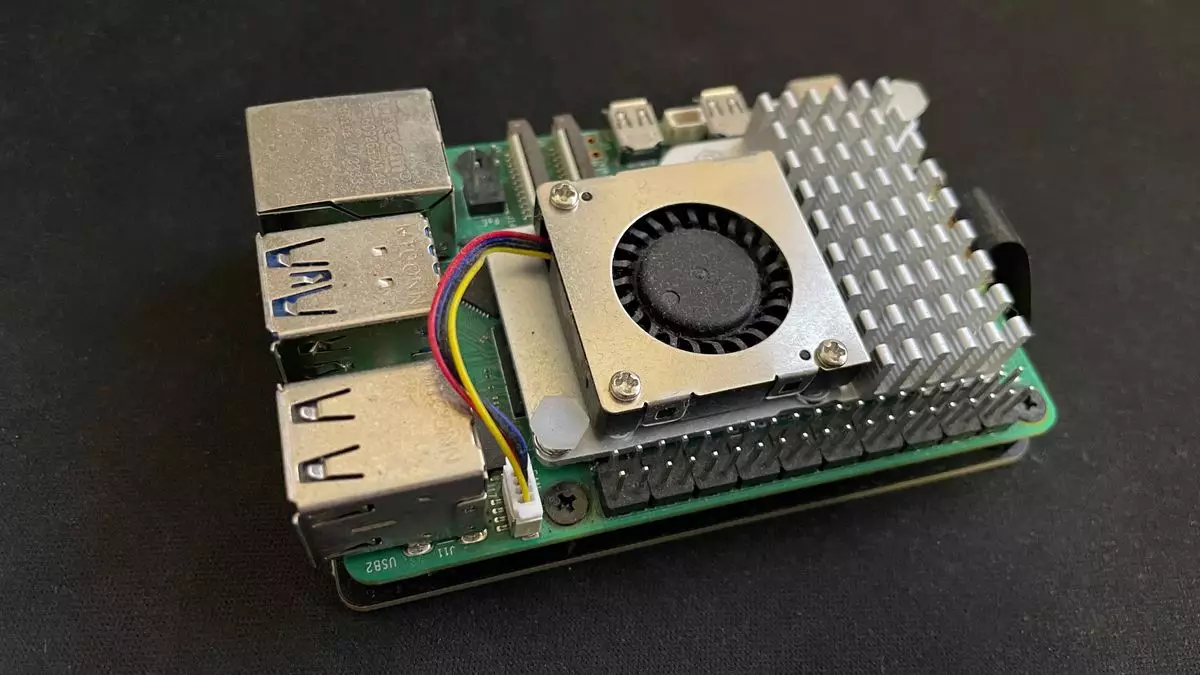The launch of the Raspberry Pi 5 in 2023 marked a significant evolution in the realm of single-board computers (SBCs). Among the myriad of advancements, one feature that stood out prominently was its support for PCIe drives. This innovation opens up a treasure trove of possibilities, transforming the compact Raspberry Pi from a mere educational tool into a formidable candidate for desktop computing and gaming. However, the initial absence of official Raspberry Pi-branded SSD solutions posed a challenge for those eager to tap into this potential. This article delves into the newfound capabilities of the Raspberry Pi 5 with the release of official SSDs and kits, and explores their implications for users and developers alike.
When the Raspberry Pi 5 was launched, it turned heads by including a PCIe connector, a feature that significantly expands the options for peripheral connectivity. While earlier models struggled with limited I/O capabilities, the inclusion of PCIe in the Raspberry Pi 5 heralded a new era. However, connecting SSDs became a complex endeavor, requiring users to seek third-party Hardware Attached on Top (HAT) solutions. The initial excitement was tempered by the realization that the Pi 5 did not have a built-in M.2 connector, complicating the upgrade pathway for enthusiasts wanting to enhance their devices with SSD storage.
Over time, Raspberry Pi Ltd recognized this burgeoning demand and responded by launching their own M.2 HAT+ and SSD kits. The availability of official SSDs not only streamlines the upgrade process but also ensures that users can access a reliable and compatible upgrade solution. This move reflects the company’s commitment to enhancing the user experience and supporting a burgeoning community of developers and makers.
The Raspberry Pi 5’s performance improvements over its predecessor, the Pi 4, have not gone unnoticed. With the right cooling setup, this SBC can handle an impressive array of desktop applications, making it a more practical choice for everyday computing tasks. For gaming enthusiasts, this advancement has sparked interest in running more demanding titles on the device. Upon testing, users found that classic games, such as Doom 3, could run at playable framerates, albeit with certain caveats relating to resolution and graphic settings.
However, a critical limitation arose from reliance on MicroSD cards, which, despite being a traditional storage solution, often fall short in terms of speed and reliability. The significant upgrade to SSDs dramatically changes this narrative. The faster read and write speeds of SSDs not only improve load times but also enhance data stability, making the gaming experience smoother and more enjoyable.
For those who invested in third-party HATs and SSDs, such as using a Pimoroni NVMe base with a Crucial P3 drive, the experience has been gratifying. Yet, the introduction of official SSD kits presents an opportunity for a broader audience to engage with the potential of the Raspberry Pi 5 without the complexities of choosing compatible components themselves.
One of the intriguing facets of the Raspberry Pi 5’s architecture is its potential for configuration and performance tuning. While the new official SSDs are primarily PCIe 3.0 compatible, the Pi 5 initially supports PCIe 2.0 speeds. Savvy users can, however, unlock the potential for enhanced performance by editing the Pi’s config file, allowing them to coax PCIe 3.0 speeds from the device. This capability for overclocking opens up new avenues for users looking to maximize the performance of both the Raspberry Pi and the connected SSD.
This flexibility positions the Raspberry Pi 5 as not just a gaming platform but a general-purpose development tool suited for a variety of applications. From hosting lightweight servers to acting as a media center, the addition of an SSD coupled with overclocking could lead to significant improvements across the board.
The launch of official SSDs for the Raspberry Pi 5 encapsulates an exciting phase in the evolution of single-board computing. No longer confined to educational projects and basic applications, the Raspberry Pi 5 is emerging as a versatile desktop alternative, particularly for light gaming and retro emulation. The ease of access to quality storage solutions and performance enhancements ensures that both hobbyists and professionals can leverage the platform’s full potential. As the Raspberry Pi community continues to grow, this remarkable device demonstrates its capability of adapting to the evolving needs of users, paving the way for an innovative future in computing.

